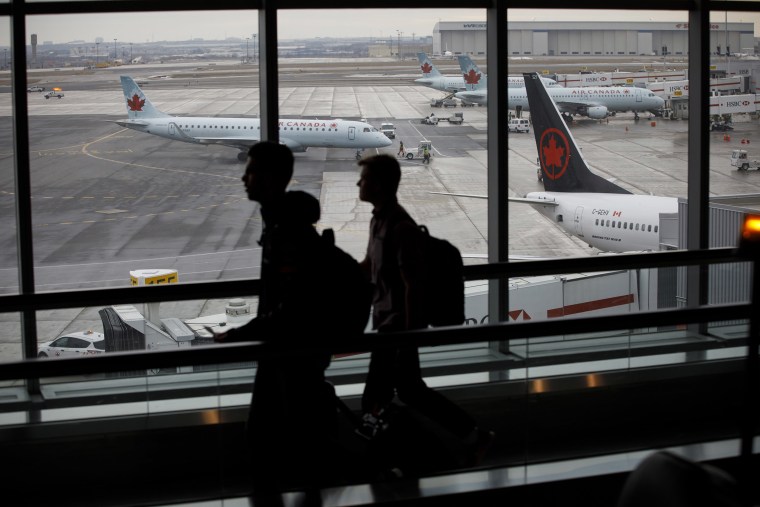After months of development and discussion with federal aviation regulators, Boeing plans to brief about 200 pilots at its Renton, Washington, facilities Wednesday on its fixes for the 737 Max jets involved in two fatal crashes since October.
The plane has been grounded since mid-March following the deadly accidents. Part of the plane’s flight control system is suspected of causing, at least in part, the crashes that killed all 346 people aboard the jets.
Boeing believes it has solved issues with the 737 Max automated flight control system known as MCAS by updating the plane’s software, cockpit alerts and pilot training. Last weekend, pilots from five airlines, including American, Southwest, and United were briefed on the software updates and tested them in a flight simulator.
“I think they’ve made the changes that will get these planes back in the air,” said one pilot familiar with the changes.
Pilots and other people familiar with the work say there are four notable changes.
Limit MCAS corrections
As Boeing and investigators studied the brief flights of the Lion Air plane that plunged into the Java Sea in Indonesia Oct. 29 and the Ethiopian Airlines crash on March 10, the scariest similarity was the way both flights pitched up and down before crashing.
Many believe the automated flight control system — the Maneuvering Characteristics Augmentation System, or MCAS — continually pushed the nose of the plane down despite the pilots repeatedly trying to correct the move. The new software will allow MCAS to push the nose of the plane lower just once and only for 10 seconds at most.
Two sensors, not one
Another factor believed to have played a role in the 737 Max crashes is the possibility that erroneous data was fed to the MCAS software from the plane’s two angle-of-attack (AOA) sensors.
Those sensors on the outside of the nose of a plane measure how a plane is positioned. If the nose of the 737 Max is pointed too high relative to its airspeed, it could go into a stall. Boeing originally designed MCAS to receive data from just one AOA sensor on the 737 Max.
That will change in the future with both sensors feeding data into the automated flight control system. And if the readings between the two sensors are substantially different, they will not trigger MCAS.
Cockpit alerts
Since the crashes of the two 737 Max planes, Boeing has faced fierce criticism for not doing more to tell flight crews about the MCAS system or alert them when the automated flight control technology kicks in.
In particular there are two indicators Boeing has offered, but only if airlines paid extra to have them installed on the cockpit. That will be changing in the future. Boeing will now offer to angle of attack indicators in the cockpit free of charge.
It will additionally include another indicator showing if the angle of attack sensors disagree that will now be standard equipment in all 737 Max airplanes.
Updated training
While flight crews around the world are now aware of MCAS and how it can impact the lift off and flight of the 737 Max, that was not the case initially.
Even after Boeing issued an airworthiness directive late last year clarifying procedures pilots should follow to shut off MCAS, there has been steady criticism that Boeing was not going far enough.
As a result, Boeing will be increasing how airlines train flight crews how to handle 737 Max planes when MCAS is enabled and how they can disable the system if it is creating a dangerous situation.
Most, if not all of the pilots attending the briefing at Boeing’s Renton facilities Wednesday are aware of the plan to fix the Max. The Federal Aviation Administration will soon be reviewing the software and pilot training changes and is expected to certify them within a week or two, a major hurdle to ultimately having the FAA lift the grounding of the 737 Max.

